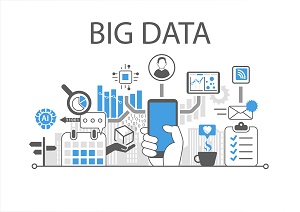Big data has had a huge impact on the way the modern world works in nearly every area of life. If there’s one area where big data has been used to its maximum potential, it has to be in the retail sector.
Here are some of the most powerful ways that the use of analytics has transformed the markets from supply chain and marketing to customer service and beyond.
Customer Retention
One of the most incredible changes that big data has had on retail is the way that companies handle their clientele. Customers are no longer amorphous, homogeneous buying units that will unlock their safes and dole out cash when you cobble together the right sales pitch and broadcast it to a large enough audience.
Big data has taken each previously vague “consumer” and turned them into “Bob the fisherman,” “Judy the woodworking enthusiast,” “Joe the sports junkie,” and “Jill the crunchy stay-at-home mom.” Thanks to data mining and predictive analytics, each customer has become a living, breathing person in the eyes of a company, with interests and preferences that they are able to track and utilize in areas like marketing collateral and customer service.
One of the best uses of big data in the customer retention/customer service area is the rise in the quality of customer relationship management (CRM). The ability for companies to track their customer’s interests, complaints, purchases, and basically everything they know about them in a single CRM file enables them to improve and manage the relationship they have with each and every customer. This is an incredibly powerful business tool that is yielding profitable rewards for businesses on a daily basis.
Marketing
While personalization of the customer experience is clearly a vital part of marketing, the effects of big data on retail stretch much further into the marketing realm.
It comes as no surprise that search engine optimization (SEO), search engine marketing (SEM), email marketing, and mobile marketing are the areas showing the greatest growth due to the compiling and analysis of raw data. Search engine marketing, in particular, requires massive amounts of data. In addition, practices like email segmentation have grown through the use of personalized data. Mobile-first marketing has also come to dominate the search engine world, thanks to data being collected from mobile users across the globe.
Whether you’re talking about personalized email campaigns, A and B testing for a mobile app, or optimizing marketing content for search engines, there’s no doubt that the marketing world has not only been touched, but thoroughly baptized, in big data.
Inventory
While it may not be as flashy as marketing and customer relations, inventory management has been seriously revolutionized by big data as well. For instance, the use of optimized algorithms and advanced machine learning has enabled inventory managers to discover patterns, correlations, and relationships in collected inventory management data.
This information has been put to powerful use in helping to make supply chain decisions including exactly what must be ordered at what time, what is currently in stock, and where inventory is located. This has allowed for a reduction in the required amount of inventory management space at any one given moment. In some industries, the control over the inventory and manufacturing process provided by big data has even enabled practices like print-on-demand supply, thus eliminating the cost of inventorying products altogether.
Accounting
Finally, we have accounting. If one area of retail could be considered less glorious than inventory, it has to be the number-crunching department. Fortunately, big data is significantly removing the need for humans to do the number-crunching in the mind-numbing quantity required in the past.
Numerous automated payroll solutions like OnPay and QuickBooks harvest data and regurgitate it onto forms and documents that bear mundane yet vital information that keeps many businesses operating.
Even the burden of doing taxes — the bane of many a company’s existence — can be largely automated. Critical information can easily be stored throughout the year in a variety of different programs designed for the purpose. Then, that information can be easily accessed when tax time rolls around and small and medium-sized business (SMB) owners need the numbers to send out W-2s or to fill out their Form 944.
Using Big Data in the Retail Sector
If you’re looking for ways to incorporate more big data into your retail operations, it’s essential that you always go in with a plan:
- Strategize how you will go about acquiring, analyzing, and using your data.
- Prepare a team that is up to date, capable, and on the same page regarding your data strategy.
- Execute your plan with boldness.
- Augment your efforts by evaluating and adjusting your plan as you begin to see results.
If you can follow these steps, you’ll be able to thoughtfully implement a big data strategy into your own retail endeavors, whether you’re selling in a brick-and-mortar location, launching an e-commerce business, or anything in between.
About the Author

Avery Phillips is a freelance human based out of the beautiful
Treasure Valley. She loves all things in nature, especially humans.
Leave a comment down below or tweet her @a_taylorian with any questions or comments.
Sign up for the free insideBIGDATA newsletter.





Speak Your Mind